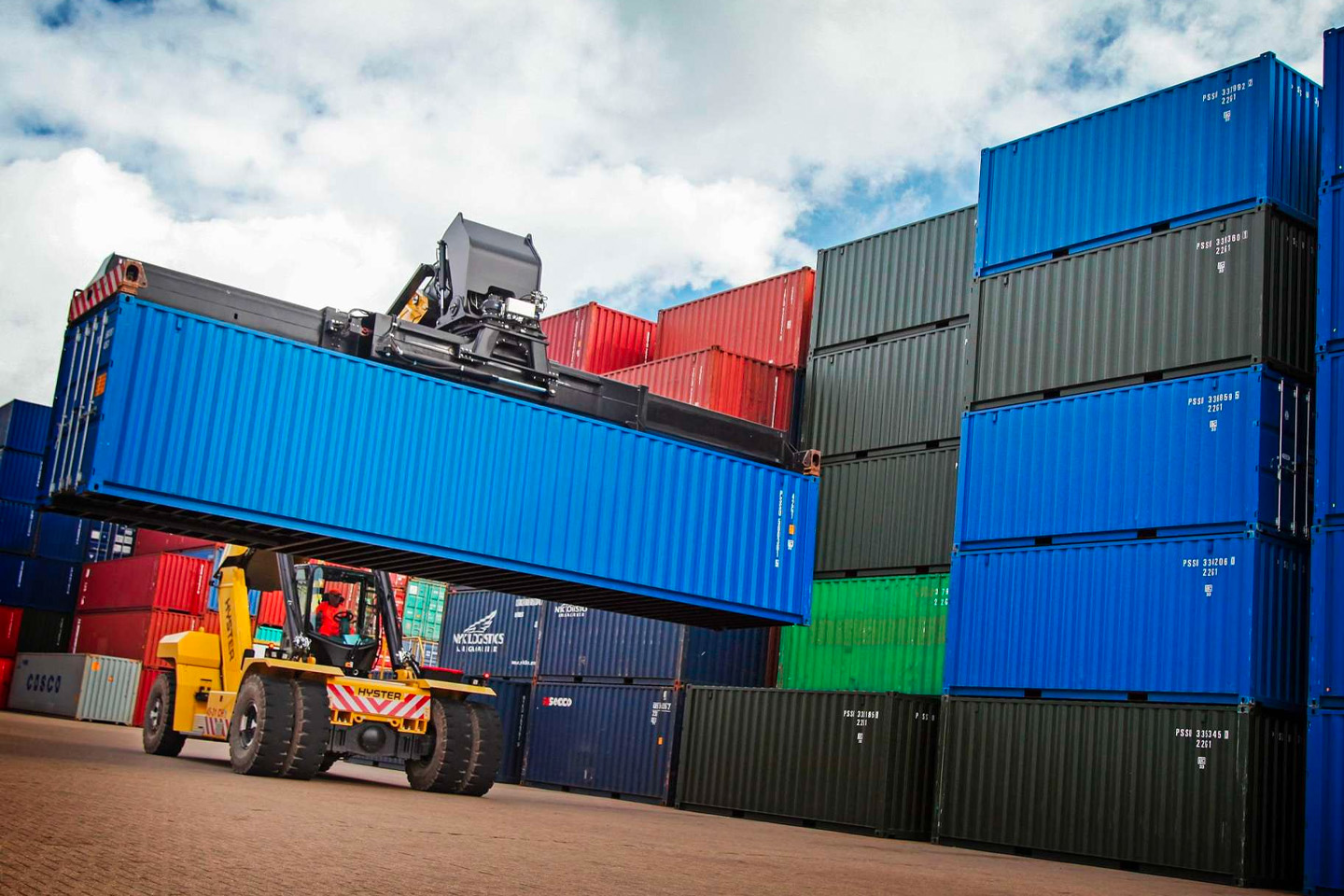Liga Asuransi – Dear risk takers, how are you? I hope your business is doing well.
As the senior insurance broker, I want to continue the discussion about risk management and insurance, and this time we will explore the risk of electronic equipment transportation. If you are interested in this article, please share it with your friends so they can understand as much as you do.
Electronic equipment has become integral to our daily lives in the digital age. From smartphones and laptops to industrial machinery and medical devices, electronic equipment is the backbone of modern society. These devices drive innovation, improve efficiency, and connect us in previously impossible ways. In this article, we delve into the critical role played by electronic equipment and the inherent risks involved in their transportation, emphasizing the need for comprehensive insurance solutions to safeguard these invaluable assets.
This article will explore how insurance can play a pivotal role in mitigating these risks. We’ll cover various insurance policies tailored to electronic equipment transportation, including property, inland marine, cargo, and cyber insurance. By the end of this article, readers will have a comprehensive understanding of the risks associated with electronic equipment transportation and the insurance solutions available to protect their valuable assets and operations.
TYPES OF EQUIPMENT CATEGORIZED AS ELECTRONIC EQUIPMENT
Electronic equipment encompasses many devices and machinery that rely on electronic components and technology. Here are some common types of equipment that fall under the category of electronic equipment:
Consumer Electronics:
- Smartphones and Tablets: Communication, entertainment, and productivity devices.
- Televisions and Home Entertainment Systems: Including smart TVs, gaming consoles, and streaming devices.
- Audio Equipment: Headphones, speakers, and home theater systems.
- Digital Cameras and Camcorders: Used for photography and video recording.
Computing Equipment:
- Personal Computers: Desktops and laptops are used for various tasks.
- Servers: Powerful computers used for data storage and network management.
- Data Centers: Facilities housing multiple servers for cloud computing and online services.
- Industrial and Manufacturing Equipment:
- Automation Systems: Including programmable logic controllers (PLCs) and industrial robots.
- Testing and Measurement Devices: Used in quality control and research.
- Manufacturing Machines: CNC machines, 3D printers, and more.
Medical Devices:
- Imaging Equipment: MRI machines, X-ray machines, and ultrasound devices.
- Patient Monitoring Systems: Including ECG monitors and vital signs monitors.
- Life Support Equipment: Ventilators, dialysis machines, and infusion pumps.
Communication Equipment:
- Telecommunication Infrastructure: Including cell towers, switches, and routers.
- Networking Equipment: Routers, switches, and modems for data transmission.
- Two-way Radios: Used by emergency services and in various industries.
Scientific and Laboratory Instruments:
- Microscopes: Used for research and analysis.
- Spectrometers: Devices for analyzing the properties of matter and light.
- Chromatography Equipment: Separation and analysis of chemical compounds.
Aerospace and Defense Systems:
- Aircraft Avionics: Navigation, communication, and control systems.
- Military Electronics: Radar, surveillance, and weaponry systems.
Security and Surveillance Systems:
- CCTV Cameras: Used for monitoring and security purposes.
- Access Control Systems: For securing buildings and facilities.
Transportation Equipment:
- Automotive Electronics: Includes engine control units (ECUs), navigation, and entertainment systems.
- Aviation Electronics: Avionics systems in aircraft.
- Marine Electronics: Navigation and communication systems for ships.
Energy and Power Equipment:
- Power Grid Equipment: Transformers, switches, and control systems.
- Renewable Energy Systems: Solar inverters, wind turbine controllers.
These are just some examples of electronic equipment, and the category continues to expand as technology evolves. As these devices are crucial in various sectors, ensuring their safe transportation and operation is paramount, making insurance coverage vital for mitigating potential risks and losses.
UNDERSTANDING THE RISK OF ELECTRONIC EQUIPMENT TRANSPORTATION
- Physical Damage: Electronic equipment is often fragile and susceptible to damage from mishandling, rough handling during transit, or accidents during loading and unloading.
- Theft and Loss: In the complex web of global supply chains, there’s always a risk of theft or loss of electronic equipment, especially when multiple parties are involved in the logistics.
- Environmental Hazards: Electronic equipment can be sensitive to environmental factors such as temperature fluctuations, humidity, and electrostatic discharge, resulting in malfunctions or irreparable damage.
- Data Security Risks: With electronic devices often containing sensitive data, the risk of data breaches during transportation is a growing concern, especially with the increasing sophistication of cyber threats.
- Transportation Method Risks: Different transportation methods, such as air, sea, or road, pose unique risks to electronic equipment. For example, sea transport may expose goods to corrosive saltwater, while air transport risks turbulence.
THE ROLE OF INSURANCE
Insurance plays a pivotal role in mitigating these risks. Below, we’ll explore how various insurance types are tailored to protect electronic equipment during transportation:
- Property Insurance: This type of insurance covers damage or loss of the electronic equipment itself. You can recoup the repair or replacement costs if your equipment is damaged during transit.
- Inland Marine Insurance: Designed for goods in transit, inland marine insurance is beneficial for electronic equipment being transported over land. It covers losses caused by accidents, theft, and other perils.
- Cargo Insurance: Cargo insurance is focused explicitly on protecting goods while they are being transported including electronic equipment. It covers a range of risks, from theft to damage caused by natural disasters.
- Cyber Insurance: Protecting sensitive data is crucial in the digital age. Cyber insurance can help cover the financial losses and liabilities associated with data breaches and cyberattacks that may occur during transportation.
- Customized Policies: Many insurance providers offer the flexibility to tailor policies to the specific needs and value of the electronic equipment transported, ensuring adequate coverage.
Risks in the Transportation of Electronic Equipment.
Electronic equipment transport has several inherent risks that can lead to financial losses and operational disruptions. Understanding these risks is crucial for effectively managing them. Here are the key risks involved in the transportation of electronic equipment:
- Physical Damage: Electronic equipment, often delicate and sensitive, can suffer physical damage during transit due to mishandling, rough handling by carriers or logistics personnel, or accidents during loading and unloading processes. This damage can range from minor scratches and dents to severe structural harm that renders the equipment non-functional.
- Theft and Pilferage: Theft remains a significant concern while transporting valuable electronic equipment. Whether it’s theft by employees, third-party contractors, or external criminals, the loss of equipment due to theft can result in substantial financial setbacks.
- Loss or Misplacement: Electronic equipment can sometimes go missing or be misplaced during transit, especially in complex supply chains involving multiple touchpoints and handovers. Tracking and inventory discrepancies can lead to equipment loss that may be discovered after a period of time.
- Environmental Hazards: Electronic equipment is susceptible to environmental factors such as temperature variations, humidity, and electrostatic discharge. Exposure to extreme conditions or improper handling can lead to equipment malfunction or permanent damage.
- Data Security Risks: Many electronic devices store sensitive data, especially those used in business and healthcare settings. During transportation, there is a risk of data breaches or unauthorized access to this information, potentially resulting in legal and reputational consequences.
- Transportation Accidents: Accidents can occur during the transportation of electronic equipment, especially when using road or air transport. Vehicle collisions, plane crashes, or unexpected incidents can lead to equipment damage or loss.
- Supply Chain Disruptions: Delays or disruptions in the supply chain can affect the timely delivery of electronic equipment. This can have cascading effects, impacting manufacturing schedules, customer satisfaction, and revenue.
- Regulatory and Compliance Risks: Depending on the type of electronic equipment and its destination, there may be regulatory requirements and compliance standards that must be adhered to during transportation. Please meet these to avoid fines and legal issues.
- Customs and Import/Export Risks: When electronic equipment crosses international borders, customs clearance and import/export regulations come into play. Incorrect documentation, tariffs, or import/export restrictions can lead to delays and financial penalties.
- Insurance Gaps: Failing to adequately ensure electronic equipment during transportation can result in financial losses. Without proper insurance coverage, repairing or replacing damaged or lost equipment may fall entirely on the owner or shipper.
BEST PRACTICES FOR SAFE TRANSPORTATION
Safe transportation of electronic equipment is essential to ensure that your valuable assets reach their destination in good condition. Implementing best practices can help minimize transportation risks and potential damages. Here are some critical best practices for safe transportation of electronic equipment:
Proper Packaging:
- Use high-quality, industry-standard packaging materials to protect electronic equipment from shock, vibration, and impact during transit.
- Use antistatic materials to prevent electrostatic discharge (ESD) that can damage sensitive electronic components.
- Ensure equipment is securely fastened within its packaging to prevent shifting or movement during transportation.
Real-Time Tracking and Monitoring:
- Invest in tracking and monitoring systems that provide real-time updates on the location and condition of your electronic equipment during transit.
- Use GPS, temperature, and humidity sensors to monitor environmental conditions and detect anomalies.
Staff Training:
- Train personnel involved in the transportation process to handle electronic equipment carefully.
- Educate staff on proper loading and unloading procedures to prevent damage during these critical phases.
- Emphasize the importance of following safety protocols and guidelines when transporting sensitive and valuable equipment.
Emergency Response Plan:
- Develop a comprehensive emergency response plan that outlines the steps to take in case of accidents, theft, or other unexpected events.
- Ensure employees know the emergency procedures and how to respond effectively to minimize damage and losses.
Secure Transportation Methods:
- Choose transportation methods and carriers with a track record of reliability and safety for electronic equipment.
- Consider using climate-controlled vehicles for temperature-sensitive equipment and secure containers for high-value shipments.
Insurance Coverage:
- Obtain appropriate insurance coverage tailored to the value and risks associated with your electronic equipment. Ensure that the range includes transportation-related risks.
- Regularly review and update your insurance policies to protect your assets adequately.
Documentation and Record Keeping:
- Maintain thorough records of the condition of the equipment before and after transportation.
- Document any damages or irregularities in shipping documentation, such as bills of lading or waybills, and communicate these to carriers promptly.
Quality Control Checks:
- Conduct quality control checks before shipping to verify that equipment is functioning correctly and in good condition.
- Create a checklist to ensure all necessary accessories, cables, and documentation accompany the equipment.
Labeling and Identification:
- Clearly label packages with information about their contents and handling instructions.
- Use unique identification codes or labels to track individual pieces of equipment, making monitoring and locating specific items more accessible.
Security Measures:
- Implement security measures, such as tamper-evident seals or locking mechanisms, to deter theft and unauthorized access to equipment during transit.
- Consider using security escorts or armored transport for high-value electronic equipment.
Continuous Improvement:
- Continuously evaluate and improve your transportation processes based on feedback, incidents, or emerging technologies.
- Stay informed about industry best practices and advancements in packaging and transportation methods.
By adhering to these best practices, you can significantly reduce the risks associated with transporting electronic equipment and increase the chances of your equipment arriving at its destination safely and in optimal condition.
CASE STUDIES
Below are two real-world case studies that illustrate how companies faced transportation risks and benefited from insurance coverage:
Case Study 1: Tech Company Safeguards Valuable Equipment
Company: A leading technology manufacturer specializing in high-end computer servers.
Challenge: The company regularly shipped its server equipment to international clients. During one shipment, a cargo ship encountered a severe storm, which knocked containers overboard. Among the lost containers was a shipment of servers worth millions of dollars.
Solution: The company had invested in comprehensive cargo insurance. Upon reporting the loss to their insurer, they could claim the full value of the lost servers. This coverage helped them recover their financial losses quickly and avoid a significant setback in fulfilling client orders.
Outcome: The company’s reputation for reliability remained intact, and they promptly met their clients’ demands. Their investment in cargo insurance protected their bottom line, allowing them to replace the lost equipment and continue growing their business.
Case Study 2: Medical Device Manufacturer Prevents Data Breach Fallout
Company: A medical device manufacturer specializing in advanced patient monitoring systems.
Challenge: The company was shipping a new line of patient monitoring devices internationally. During transit, their cargo was briefly left unattended at an airport cargo facility, and unauthorized personnel accessed the equipment, potentially compromising sensitive patient data.
Solution: The company had a robust cyber insurance policy that covered data breaches and unauthorized access incidents. Upon discovering the violation, they promptly reported it to their insurer. The insurer provided assistance for notifying affected parties, conducting a forensic investigation, and enhancing cybersecurity measures.
Outcome: While the incident was a setback, the company’s swift response, aided by their cyber insurance, minimized the impact. They addressed the breach, mitigated data loss, and reassured their customers that their data was secure. This proactive approach protected the company from potential legal liabilities and reputation damage.
These case studies demonstrate how insurance can be a valuable safety net for businesses facing transportation risks. In both instances, having the right insurance coverage in place allowed the companies to recover from unforeseen challenges and continue their operations with minimal disruptions. It emphasizes the importance of assessing risks and securing appropriate insurance to protect valuable assets during transportation.
WHY DO YOU AN INSURANCE BROKER?
Engaging the services of an insurance broker for the transportation of electronic equipment offers several valuable advantages:
Expertise in Insurance: Insurance brokers specialize in insurance products and have in-depth insurance market knowledge. They understand the complexities of insurance policies and can help you navigate the intricacies of coverage options, terms, and conditions.
Tailored Insurance Solutions: Insurance brokers work closely with clients to assess their needs. Regarding electronic equipment transportation, brokers can customize insurance policies to match the unique risks associated with your equipment, ensuring that you have adequate coverage without overpaying for unnecessary features.
Access to Multiple Insurance Providers: Brokers have access to a wide network of insurance providers, including large and niche companies. This means they can shop around on your behalf to find the most competitive rates and coverage options available.
Risk Assessment and Mitigation: Brokers can conduct thorough risk assessments to identify potential vulnerabilities in your transportation process. They can then recommend risk mitigation strategies to minimize the likelihood of losses, such as proper packaging, security measures, and safety protocols.
Claims Assistance: In the unfortunate event of a loss or damage to your electronic equipment during transportation, insurance brokers can assist you in filing and managing insurance claims. They act as intermediaries between you and the insurance company, ensuring a smoother and more efficient claims process.
Time and Cost Savings: Partnering with an insurance broker saves you the time and effort required to independently research and compare insurance options. Brokers streamline the process, helping you find suitable coverage quickly and efficiently.
Updates and Policy Management: Brokers stay informed about changes in the insurance industry and can provide updates and recommendations when it’s time to renew or adjust your insurance policies. They also manage the administrative aspects of your insurance, such as policy renewals and documentation.
Conflict Resolution: If any disputes or issues arise with the insurance company, brokers can act as advocates to resolve conflicts and ensure you receive fair treatment and compensation.
Comprehensive Coverage: Brokers can help you assess all potential risks related to electronic equipment transportation, including physical damage, theft, data breaches, and environmental factors. They ensure that your coverage is comprehensive and addresses all relevant concerns.
Peace of Mind: By working with an insurance broker, you gain peace of mind knowing that your electronic equipment is adequately protected during transportation. Brokers help you proactively manage risks and financial exposures.
In summary, insurance brokers are valuable partners when it comes to securing insurance coverage for the transportation of electronic equipment. Their expertise, industry knowledge, and access to a broad range of insurance options ensure that you can make informed decisions, protect your assets, and navigate the complexities of the insurance landscape effectively.
One of the leading insurance brokers focusing on Electronic Equipment Insurance in Indonesia is L&G Insurance Brokers.
For your insurance needs in Indonesia, call L&G Insurance Broker now!
—
LOOKING FOR INSURANCE PRODUCTS? DON’T WASTE YOUR TIME AND CONTACT US RIGHT NOW
L&G HOTLINE 24 HOURS: 0811-8507-773 (CALL – WHATSAPP – SMS)
website: lngrisk.co.id
E-mail: customer.support@lngrisk.co.id
—

















